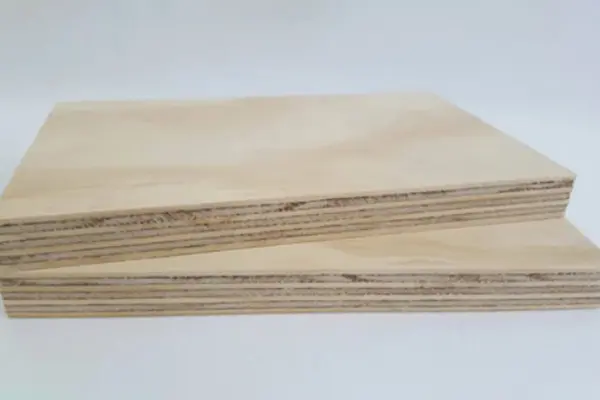Plywood is a versatile and widely used building material made by gluing together thin layers of wood veneer, called plies. These layers are typically arranged with their grain direction alternating at right angles, which gives plywood its strength and stability. However, not all plywood is created equal, and it is crucial to distinguish between two primary types: non-structural and structural plywood. Understanding the differences between these types is essential for selecting the right material for your project, and ensuring safety, performance, and longevity.
What is Structural Plywood?
Structural plywood is specifically engineered to bear loads and provide support in construction and industrial applications. This type of plywood meets stringent standards and is often used in situations where strength, durability, and resistance to environmental factors are critical.
- Strength and Durability: Structural plywood is manufactured to have high strength and stiffness, which makes it suitable for load-bearing applications. It is commonly used in construction for floor, wall, and roof sheathing, as well as for creating beams, columns, and other structural components. The strength of structural plywood comes from the quality of the wood veneers used, the adhesive bonds, and the manufacturing process, which ensures consistent thickness and density.
- Adhesives: The adhesives used in structural plywood are specially formulated to withstand exposure to moisture, temperature fluctuations, and other environmental stresses. Phenol-formaldehyde resin is a common adhesive used in structural plywood, known for its water-resistant properties. This makes structural plywood ideal for both interior and exterior applications, including areas with high humidity or exposure to rain.
- Grading and Standards: Structural plywood is graded based on its strength and appearance, with grades ranging from A to D. The grading system indicates the quality of the veneer faces and the presence of defects such as knots, splits, or voids. Structural plywood also adheres to strict national and international standards, such as the Australian Standard AS 2269 and the European Standard EN 636, which define the mechanical properties and testing requirements for load-bearing applications.
- Applications: Typical applications for structural plywood include residential and commercial building construction, formwork for concrete, scaffolding, and industrial projects where reliability and safety are paramount. Due to its high load-bearing capacity, it is often the preferred choice for projects that demand structural integrity and resistance to wear and tear over time.
What is Non-Structural Plywood?
Non-structural plywood, as the name suggests, is not designed to carry significant loads or provide structural support. Instead, it is used for applications where aesthetic appearance and general utility are more important than strength and durability.
- Aesthetic and Utility Applications: Non-structural plywood is typically used in applications where visual appeal and smoothness are prioritized, such as in cabinetry, furniture making, interior paneling, and decorative finishes. It is available in a wide range of grades and finishes, allowing for flexibility in design and decoration. The face veneers of non-structural plywood are often of higher quality, free from defects, and can be sanded or treated for a fine finish.
- Adhesives: The adhesives used in non-structural plywood are usually not as strong or moisture-resistant as those used in structural plywood. Urea-formaldehyde resin is a common adhesive for non-structural plywood, which is less resistant to moisture and temperature changes. This means non-structural plywood is more suitable for indoor use, away from moisture or extreme weather conditions.
- Grading and Standards: Non-structural plywood is also graded based on its appearance and quality, but the grading system focuses more on the surface finish and less on mechanical properties. While it may still be strong and durable, non-structural plywood does not meet the same rigorous standards for load-bearing capacity as structural plywood.
- Applications: Non-structural plywood is widely used in interior applications such as furniture, shelving, wall paneling, and door skins. It is also used for creating decorative elements, model making, and other crafts where ease of use, lightness, and a smooth finish are important. Its lower cost compared to structural plywood makes it an economical choice for projects where high strength is not required.
Key Differences:
- Purpose:
- Structural plywood is designed for load-bearing applications and provides essential support in construction.
- Non-structural plywood is used primarily for decorative and utility purposes where appearance is key.
- Adhesive and Moisture Resistance:
- Structural plywood uses moisture-resistant adhesives, making it suitable for exterior and high-humidity environments.
- Non-structural plywood uses less moisture-resistant adhesives, making it more suitable for indoor, dry conditions.
- Grading Standards:
- Structural plywood adheres to strict standards for strength, durability, and resistance to environmental factors.
- Non-structural plywood is graded more on appearance and finish rather than mechanical properties.
- Applications:
- Structural plywood is used in construction, formwork, scaffolding, and industrial projects.
- Non-structural plywood is used in furniture, interior paneling, decorative finishes, and crafts.
Conclusion
Understanding the differences between non-structural and structural plywood is essential for choosing the right material for your project. Whether you’re building a house, crafting furniture, or designing a decorative piece, selecting the appropriate plywood ensures the best results in terms of strength, durability, appearance, and cost-efficiency. By considering the intended use, environmental conditions, and required standards, you can make an informed decision that meets your specific needs and enhances the quality and safety of your work.
Post time: 08-28-2024












